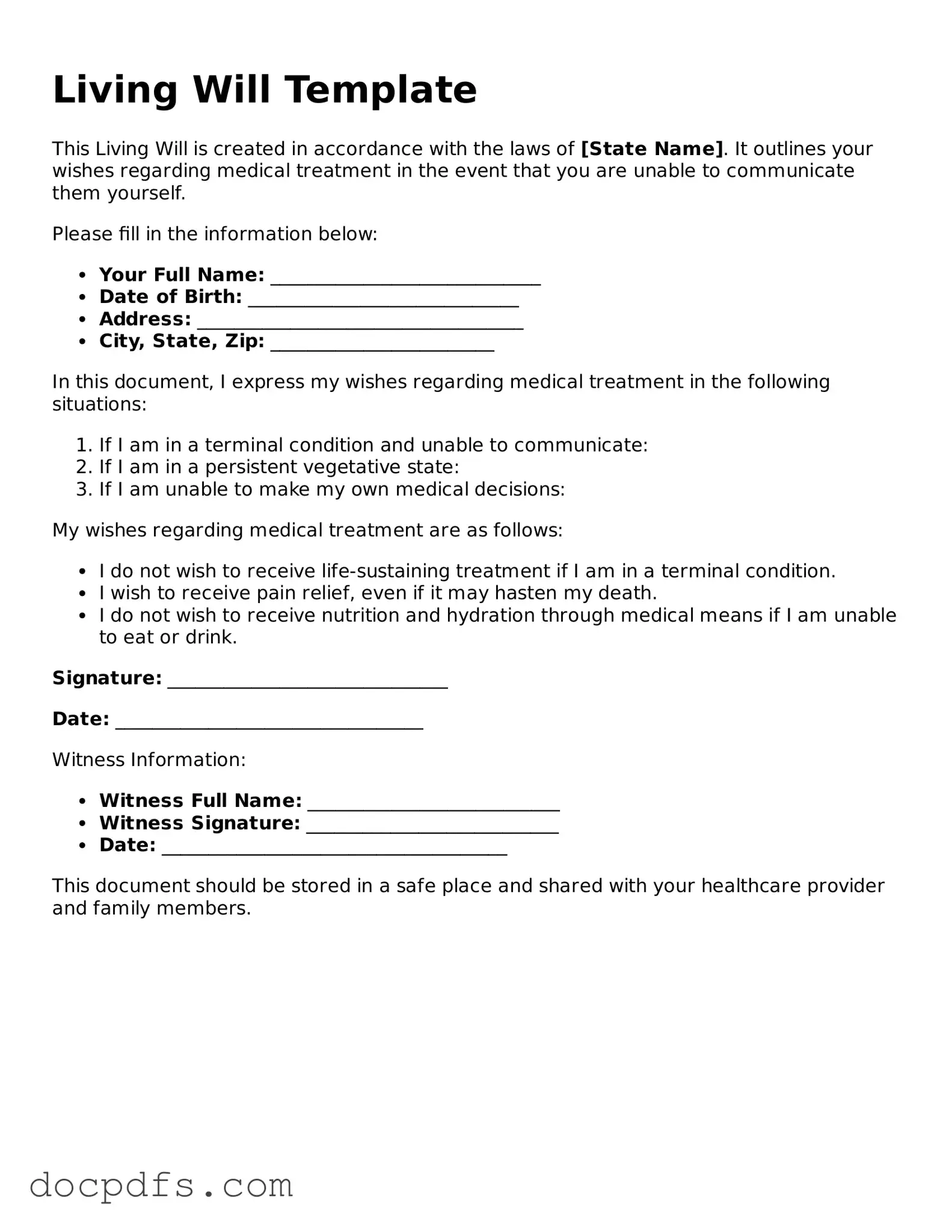What is a Living Will?
A Living Will is a legal document that outlines an individual's preferences regarding medical treatment in situations where they are unable to communicate their wishes. It typically addresses end-of-life care and specifies the types of medical interventions a person does or does not want, such as resuscitation, mechanical ventilation, or feeding tubes.
Why is a Living Will important?
A Living Will is important because it provides clarity and direction for healthcare providers and loved ones during critical moments. It ensures that your medical treatment aligns with your values and desires, reducing the burden on family members who may otherwise have to make difficult decisions without guidance.
Who should create a Living Will?
Anyone over the age of 18 should consider creating a Living Will, especially those with specific medical conditions or those who wish to have their healthcare preferences documented. It is particularly relevant for individuals facing serious illnesses or those who want to ensure their wishes are respected in the event of incapacitation.
How do I create a Living Will?
Creating a Living Will typically involves the following steps:
-
Reflect on your values and preferences regarding medical treatment.
-
Consult with healthcare professionals to understand the implications of various medical interventions.
-
Obtain a Living Will form, which may be available through state health departments or legal resources.
-
Complete the form by specifying your treatment preferences clearly.
-
Sign the document in accordance with your state's requirements, which may include witnessing or notarization.
Can I change or revoke my Living Will?
Yes, you can change or revoke your Living Will at any time, as long as you are mentally competent to do so. To make changes, simply create a new document that outlines your updated preferences. To revoke an existing Living Will, you can destroy the document or explicitly state your intention to revoke it in writing.
What happens if I don’t have a Living Will?
If you do not have a Living Will, healthcare providers will typically follow standard medical protocols and may rely on family members to make decisions on your behalf. This can lead to confusion and disagreements among family members about what you would have wanted, potentially resulting in decisions that do not align with your values.
Is a Living Will the same as a Power of Attorney?
No, a Living Will and a Power of Attorney are distinct documents. A Living Will focuses specifically on medical treatment preferences, while a Power of Attorney allows you to designate someone to make healthcare or financial decisions on your behalf if you become incapacitated. Both documents can work together to ensure your wishes are honored.
Where should I keep my Living Will?
It is essential to keep your Living Will in a safe yet accessible location. Consider the following options:
-
Store the document in a secure location at home, such as a fireproof safe.
-
Provide copies to your healthcare provider and any family members or friends who may be involved in your care.
-
Consider registering your Living Will with a state registry, if available.
